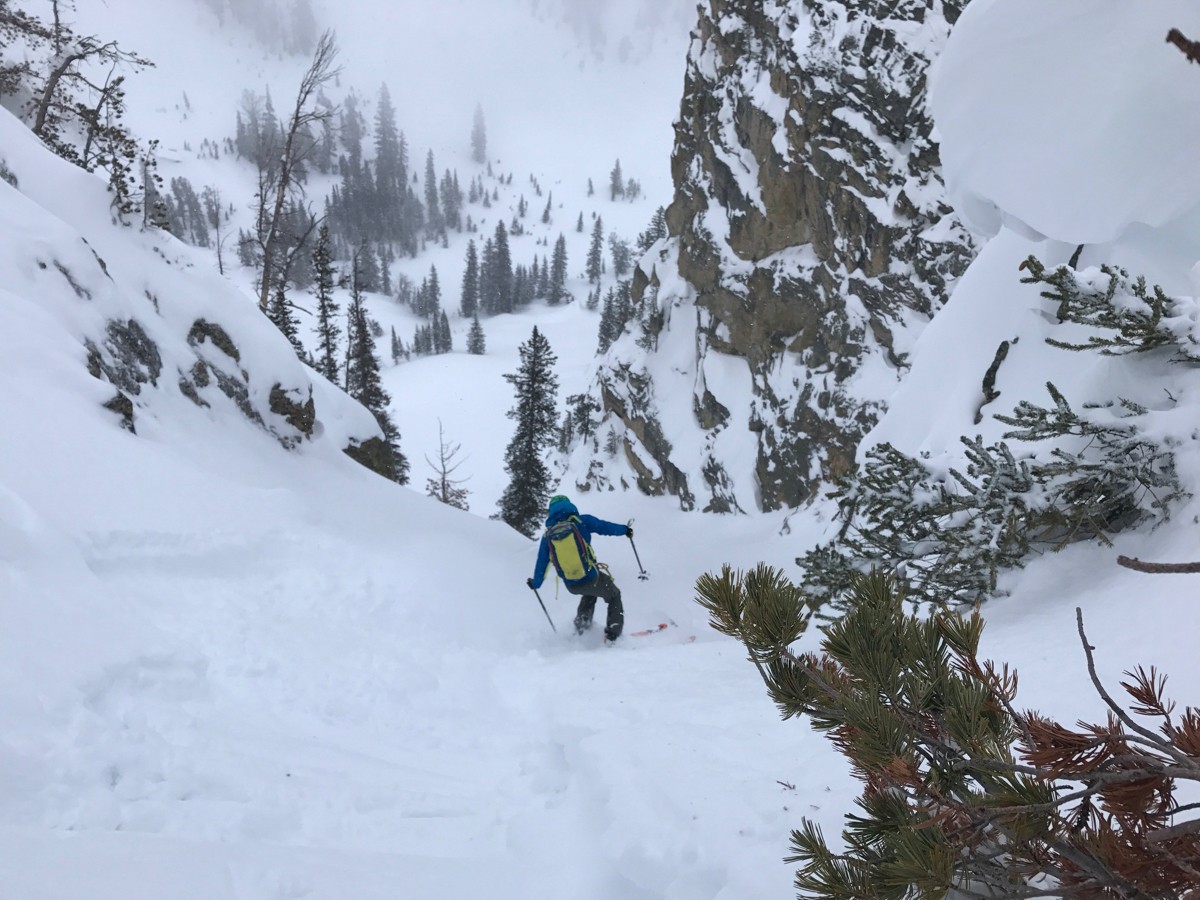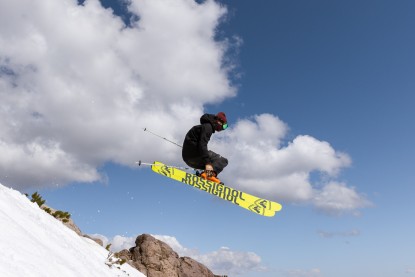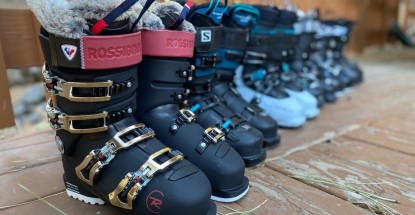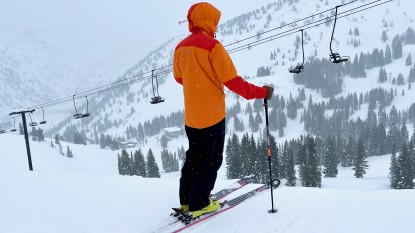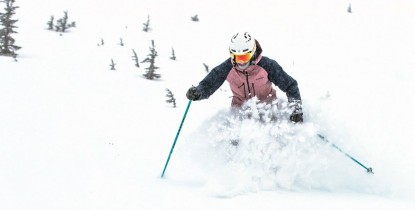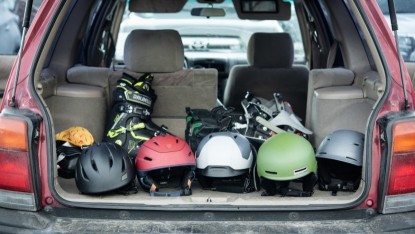Alpine touring ski bindings get better and better as time goes on, with an ever-widening range of options available. The casual and discerning user alike have options that were unheard of ten years ago, with performance better than we could have ever expected. The catch to these improvements and options is that shopping always gets trickier. Some bindings resemble jewelry more than technical equipment, and some products look remarkably similar to your alpine resort bindings. Of course, there are options everywhere in between. How do you discern between these wide-ranging options? How do you know what is best for you? How do you sort through the options to ensure that you equip yourself well? Bindings are one of the most defining pieces of backcountry skiing. Choosing them, informed and intentionally, will only enhance your overall experience.
Background information on AT Ski Bindings
At their simplest, AT ski bindings are the devices that attach your boots to your skis for backcountry skiing. They must attach just the hinging toe for uphill travel and the toe and heel for downhill travel. Consider weight and safety release as well.
Types of AT Ski Bindings
There are three major types of AT ski bindings. Of course, many products blur the lines between these categories.
Ultralight "race" style
Originally stripped down for "skimo" or "randomness racing," these tiny miracles are achieving wider appeal and application. In any human-powered endeavor, weight is paramount. These are the lightest bindings available and go uphill like a dream. They typically weigh less than 200 grams per binding but have limited features. They can still be durable and secure enough for even the most extreme skiing. They aren't necessarily suitable for super high-speed downhill skiing. Every race-style binding eliminates one or more of the major features we look for in backcountry bindings.
All-Around, Full-Featured
All-around AT ski bindings include adjustable release, adjustable length (for different boots), three levels of heel elevation, and ski brakes. Some or all of these options may be removable or customizable, but the all-around models of bindings have all these options.
Downhill Oriented
All backcountry skiing is "downhill oriented"; we go up to go down. It is the down that defines the whole experience. It is the down that differentiates hiking from backcountry skiing. In that way, all the above categories of products work downhill. However, many skiers want additional downhill performance from their ski bindings for various reasons. The primary reason many choose a downhill-oriented backcountry ski binding is familiarity. The downhill-oriented bindings look more like your resort gear and can feature release certification, which is a cousin to resort binding certification. For everything that has been skied on less "downhill-oriented" bindings, many users are more comfortable with the look and stamp of approval associated with the downhill-oriented bindings. Further, there is a tiny (and we mean very small. It probably isn't you, to be blunt) subset of super-hard charging skiers that will need the enhanced retention and more sophisticated release function of the downhill-oriented bindings. Finally, those using their backcountry gear extensively at a resort might consider downhill-oriented AT bindings.
How to Choose AT Ski Bindings
Now that we understand some different types and backgrounds of this product category, how should you make your own choice? For the most part, a huge percentage of skiers will choose bindings from the middle category. All-around, full-function basic AT bindings do the job for all, from beginners to experts. Especially if it is your first backcountry setup, we think you need a good reason not to choose a basic all-around AT ski binding. They have all the usability features, while all tech bindings share basic learning curve limitations. Within the "all-around" category is a range of weight differences. The lightest all-around bindings are race bindings with all the features tacked on. The heaviest ones are DIN/ISO certified and have downhill skiing characteristics that approach that of resort gear.
Within the category of all-around full-function bindings, the primary determinant is weight. If you read the above descriptions of the three categories and identify slightly more with the uphill crowd, aim for something on the light end of the spectrum. An example of a lightweight all-around AT binding is the ATK Crest 10. Suppose you identify more with the "downhill-oriented" crowd but know you don't need the slightly enhanced performance of the downhill-oriented bindings. In that case, an all-around choice like the Dynafit Rotation ST is suitable.
Examine some of the factors that differentiate the all-around bindings from one another. Each additional feature and functionality generally adds weight and cost. Again, we'll assume first that all "all-around" bindings must have brakes, three heel levels, adjustable release, and adjustable length for changing boots. Further differentiating characteristics are enhanced durability, heel piece "forward pressure," and DIN/ISO certification.
If you think you might wish to select a race-style binding, consider a few things. First, the most significant concession made with race-style bindings is in release characteristics. Race-style bindings usually have little to no adjustment available in their release characteristics. The release function they provide is limited and straightforward. If you have poor knees and abnormally low-risk tolerance (consider that all backcountry skiing is quite dangerous… the difference between certified release and non-certified release is pretty small, relative to the difference between participating and not), steer clear of the race-style bindings.The other features eliminated from the race bindings are easily addressed with planning and technique. The lack of multiple heel risers quickly becomes a feature instead of a bug. When you have no options in how high to lift your heel, you don't have to choose how high to lift your heel. The freedom from decision-making is liberating. Embrace the liberation from decision fatigue. Technique quickly adapts as long as you use light and flexible modern AT boots with your race bindings. The lack of brakes requires care and pre-empts resort use, but you should always be attentive in the backcountry and likely have more sophisticated release characteristics for any in-bounds use. In short, the major issue with race-style bindings remains the downhill release characteristics. Many great skiers make it work with race bindings but do so knowing the limitations.
If you are drawn to downhill-oriented bindings (Tecton, Shift, Duke, etc.), ask yourself some hard questions. Are you drawn in that direction for true performance reasons, or does the more familiar appearance compel you? There are real performance increases with these bindings, but it is our experience that you will not realize those gains until you are skiing very fast and hard, with excellent and discerning technique. Few of us ski the backcountry like that if we are honest with ourselves. If we ski that hard and that fast, we have potentially bigger problems with the consequences of any fall than we do with binding nuances. More speed equals more energy for injury, regardless of the release characteristics of your bindings. More energy equals bigger injuries. Bigger injuries are exponentially more serious in the backcountry than at or near a resort. Choose your bindings with your holistic level of risk tolerance in mind. The more sophisticated release protects your connective tissues in more complicated falls. But do you want to be exposing yourself to the potential and other consequences of such high-energy tumbles?
The above outlines most of the secondary concerns when selecting AT bindings. Because ultralight bindings do such a good job, and because AT ski bindings cover a weight range nearly an order of magnitude (the heaviest bindings are more than 12x the weight of the lightest!), the weight will be the primary determinant in your selection. Weight matters for the uphill portion of your day, and the weight of AT bindings is less closely related to downhill performance than your ski boots or skis. If you wish to cut weight while not losing much performance, bindings are a great place to do so. Cut your binding weight in half, and your ski performance might decline by 10-20%. Cut your boot or ski weight in half, and the downhill performance drops considerably more. Even more than in most cases, lowering the weight of your backcountry ski bindings is an easy investment in efficiency.

